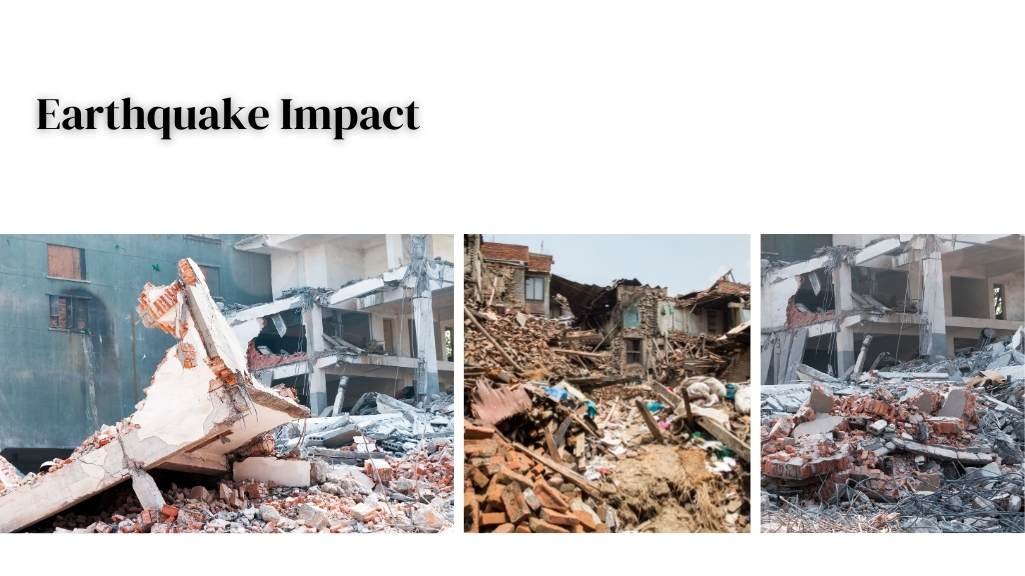Mitigating Earthquake Impact: Strategies for Resilient Communities
Alvish Asher
. 2 min read
Earthquakes are natural phenomena that result from the sudden release of energy in the Earth's crust. These seismic events can cause significant damage to infrastructure, endanger lives, and disrupt entire communities. While it is impossible to prevent earthquakes from occurring altogether, there are measures we can take to mitigate their impact and enhance the safety and resilience of our built environment. In this article, we will explore the nature of earthquakes, their causes, effective strategies for earthquake prevention, and provide an online chat for further discussion and clarification.

Understanding Earthquakes
- Causes: Earthquakes are primarily caused by the movement of tectonic plates, which make up the Earth's surface. When these plates grind or slide against each other, stress builds up along the boundaries, resulting in seismic activity when the stress is released. Fault lines, where tectonic plates meet, are particularly prone to earthquakes.
- Magnitude and Intensity: The severity of an earthquake is measured using the Richter scale, which quantifies the energy released during the event. The intensity, on the other hand, reflects the effects felt at specific locations. Both scales are logarithmic, meaning that a one-unit increase on the Richter scale represents a tenfold increase in energy released.
Strategies for Earthquake Prevention
- Building Codes and Regulations: Implementing and enforcing strict building codes and regulations is crucial for earthquake-prone regions. These codes outline design and construction standards that can withstand seismic forces. Structures must be engineered to flex and absorb energy during an earthquake, reducing the likelihood of collapse or major damage.
- Retrofitting: Retrofitting involves modifying existing structures to enhance their resilience against earthquakes. Techniques such as adding steel braces, reinforcing walls and foundations, and installing base isolators can significantly improve a building's ability to withstand seismic activity.
- Land Use Planning: Careful land use planning is vital for minimizing the impact of earthquakes. Avoiding construction in high-risk areas, such as near fault lines or unstable slopes, can prevent potential disasters. Additionally, maintaining open spaces, parks, and evacuation routes allows for safer movement during and after an earthquake.
- Early Warning Systems: Advances in technology have allowed the development of early warning systems that can detect the initial, less destructive waves of an earthquake and provide alerts to people in affected areas. These warning systems give individuals and organizations valuable seconds to minutes to take cover, shut down critical infrastructure, or evacuate.
- Public Awareness and Education: Educating the public about earthquake preparedness and response is crucial. Knowledge of proper emergency procedures, such as "Drop, Cover, and Hold On," can save lives. Public awareness campaigns, community drills, and dissemination of educational materials help promote a culture of safety and preparedness.
Conclusion
While it is impossible to prevent earthquakes entirely, a combination of effective strategies can significantly reduce their impact and protect lives and infrastructure. Implementing and enforcing building codes, retrofitting existing structures, thoughtful land use planning, early warning systems, and public education are vital components of earthquake prevention efforts. By working together and investing in these measures, we can create safer, more resilient communities in earthquake-prone regions and minimize the devastating consequences of these natural disasters.
More Stories from
Unveiling India's Volcanic Secrets: A Geological Overview
Explore India's unique volcanic history and the enduring forces of nature that continue to captivate scientists and adventurers alike.
Pros and Cons of Modern Agriculture: Balancing Food Production and Sustainability
This article discusses modern agriculture and its impact on the environment.
Zero-Waste Living: Practical Tips for Reducing Environmental Impact
Discover the power of zero-waste living as this article offers practical tips and actionable advice for reducing your environmental impact.
Eco-Friendly Practices: How Individuals and Businesses Can Make a Difference
Discover the Power of Eco-Friendly Practices: Learn how individuals and businesses can contribute to a greener world by adopting sustainable measures.
Biotechnology and the Future of Medicine: Advancements and Ethical Concerns
This article explores precision medicine's personalized treatments, the promise and ethical challenges of gene editing, the potential of artificial intelligence in healthcare, and the future of organ transplantation.










.png?width=40&aspect_ratio=1:1)


.png?width=40&aspect_ratio=1:1)